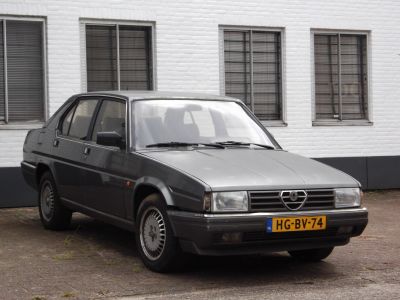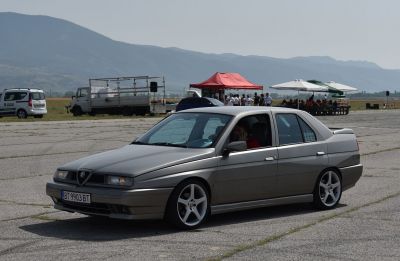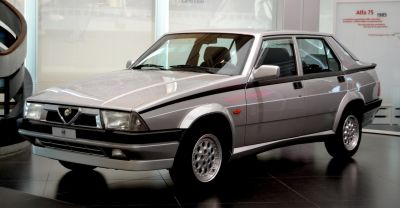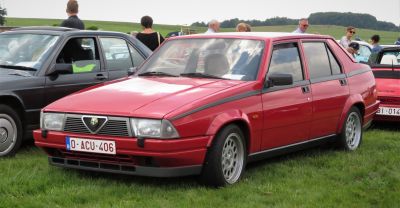 1968 Saab 99 Dimensions, Size & Specs
1968 Saab 99 Dimensions, Size & SpecsMeasurements of the 1968 Saab 99, engineered for optimal performance and comfort
| Dimensions | |
|---|---|
| Length: | 4369-4530 mm172.0-178.3 in14.3-14.9 ft |
| Width: | 1680-1690 mm66.1-66.5 in5.5-5.5 ft |
| Height: | 1435-1450 mm56.5-57.1 in4.7-4.8 ft |
| Weight Specifications | |
| Curb Weight: | 925-1161 kg2039-2560 lbs |
The Saab 99, produced from 1967 to 1984, is a classic Swedish sedan renowned for its distinctive Scandinavian design and innovative engineering. Available as a sedan, the Saab 99 was a versatile vehicle that balanced compactness and comfort, making it suitable for urban environments as well as longer journeys. Its exterior dimensions typically range from 4369 mm to 4530 mm (172 to 178 inches) in length, 1680 mm to 1690 mm (66 to 67 inches) in width, and 1435 mm to 1450 mm (56.5 to 57 inches) in height, reflecting a moderate footprint for its time. The curb weight of the Saab 99 varies between 925 kg and 1161 kg (2040 to 2559 lbs), depending on the specific model, trim, and equipment levels. This relatively lightweight construction contributed to its agile handling and fuel efficiency. The Saab 99's dimensions and weight profile place it in the compact sedan category, but its spacious interior and innovative features often gave it the presence of a larger vehicle. It was appreciated for its solid build quality and reliability, characteristic of Saab vehicles. For enthusiasts and potential buyers, these size specifications help in accurately comparing the Saab 99 with other vehicles from the same era or segment, providing insight into its practicality and road presence. The Saab 99 remains a significant model in automotive history, standing out for its unique design and functional size that made it a staple in the compact sedan class during its production years.
Discover the standout features that make the 1968 Saab 99 a leader in its class
Have a question? Please check our knowledgebase first.
The Saab 99 sedan, produced from 1967 to 1984, has a length that varies between 4369 mm and 4530 mm. In imperial units, this translates to approximately 172 inches to 178 inches. This range reflects slight variations across different model years and trim levels within the generation. The length of the Saab 99 places it comfortably in the compact to mid-size category for sedans of its era, allowing for a spacious interior while maintaining manageable external dimensions for urban and suburban driving.
The width of the Saab 99 ranges from 1680 mm to 1690 mm (about 66.1 to 66.5 inches). This relatively narrow width by modern standards was beneficial for maneuvering in tight city environments and narrow European roads, which were common during the car's production era. The width contributes to a stable ride without making the car overly bulky or difficult to park. The interior cabin width supports comfortable seating for up to five passengers, while the slim external profile aids in fitting into narrower lanes or streets.
The height of the Saab 99 varies from 1435 mm to 1450 mm (approximately 56.5 to 57.1 inches). This moderate height ensures sufficient headroom for most passengers, contributing to a comfortable interior atmosphere without compromising the car's aerodynamic profile. The relatively low height compared to modern sedans plays a role in reducing air resistance, which can enhance fuel efficiency and driving stability. The Saab 99's height strikes a good balance between passenger comfort and practical vehicle proportions.
The Saab 99's curb weight ranges between 925 kg and 1161 kg (approximately 2,039 to 2,559 pounds). This weight variation depends on factors such as engine choice, trim levels, and equipment fitted over the production span. The lighter models provide more nimble handling and generally better fuel efficiency, while the heavier versions might offer enhanced features and improved stability. Overall, the Saab 99's weight was competitive within its segment during the time, contributing to a balance of performance, fuel economy, and driving comfort.
A standard domestic garage typically measures around 2.4 to 2.7 meters (about 8 to 9 feet) in width and 4.8 to 6 meters (16 to 20 feet) in length. Given the Saab 99's length range of 4.369 to 4.530 meters (approximately 14.3 to 14.9 feet) and width roughly 1.68 to 1.69 meters (5.5 to 5.6 feet), the car comfortably fits within the standard garage dimensions. Its moderate height also poses no issues with garage clearance, assuming a standard ceiling height of at least 2 meters (6.5 feet). Therefore, the Saab 99 is suitable for parking in most typical family garages without difficulty.
The Saab 99 was introduced as a successor to the Saab 96, which was smaller in many dimensions. The 96 had a length of roughly 4,200 mm (165 inches) and a width just over 1,600 mm (63 inches), compared to the 99's 4369–4530 mm length and 1680–1690 mm width. This increase in size allowed for improved interior space, better safety features, and greater road presence. The Saab 99 marked Saab's move into a slightly larger market segment, offering more comfort and practicality than its predecessor, while retaining Saab's signature engineering and design ethos.
In terms of size, the Saab 99 falls within the compact to mid-size category, comparable to vehicles like the BMW 2002 and Volvo 240 series of the era. For example, the BMW 2002 measured around 4,225 mm (166 inches) in length and 1,605 mm (63 inches) wide, making the Saab 99 slightly longer and wider. Meanwhile, the Volvo 240, produced in the same era, was larger, measuring approximately 4,706 mm (185 inches) long and about 1,700 mm (67 inches) wide, thus placing the Saab 99 between smaller European compacts and larger mid-size cars. The Saab offered a good balance of interior space without excessive external bulk.
The Saab 99 brought several advancements to Saab's lineup, including the introduction of front-wheel drive and a transverse-mounted engine, which enhanced interior space and traction. It also featured aerodynamic styling distinct from the boxier predecessors, improving fuel efficiency and noise suppression. Safety innovations included reinforced impact zones and the use of safety cages, reflecting Saab's emphasis on occupant protection. The 99 was also notable for offering turbocharged engine options, which were groundbreaking at the time and contributed to its sporting reputation. Overall, the Saab 99 was a pioneering model in its segment and era.
Given its exterior dimensions—length between 4369 mm and 4530 mm and width of 1680 to 1690 mm—the Saab 99 provides a spacious and comfortable cabin for a vehicle of its class. The moderate height (~1435-1450 mm) contributes to adequate headroom for front and rear passengers. Seating arrangements typically accommodate five adults with reasonable legroom, especially compared to its predecessor. The strategic layout of the front-wheel-drive platform allows for more efficient use of interior space, making the cabin feel less cramped. Additionally, the sedan body style ensures practical rear seat and trunk space suitable for typical family or commuter use.
The Saab 99, while generally reliable, has some maintenance considerations due to its vintage status. Common issues include corrosion, especially in climates with heavy road salt use, requiring diligent rustproofing. The turbocharged variants need careful monitoring of turbocharger components to avoid premature wear. The Saab 99's unique engineering, such as the front-wheel-drive layout with a longitudinal engine, may require specialized knowledge for repairs and parts sourcing might be limited. Regular maintenance of the fuel system, ignition, and cooling systems is crucial to ensure longevity. However, with proper care, many Saab 99 owners enjoy decades of dependable use, as evidenced by the model's long production span and enthusiast community support.
Discover similar sized cars.

| Production: | 2003-2006 |
|---|---|
| Model Year: | 2003 |
| Length: | 4425 mm174.2 in |
| Width: | 1695 mm66.7 in |
| Height: | 1445 mm56.9 in |

| Production: | 2000-2003 |
|---|---|
| Model Year: | 2000 |
| Length: | 4425 mm174.2 in |
| Width: | 1695 mm66.7 in |
| Height: | 1445 mm56.9 in |

| Production: | 1984-1987 |
|---|---|
| Model Year: | 1984 |
| Length: | 4391 mm172.9 in |
| Width: | 1638 mm64.5 in |
| Height: | 1420 mm55.9 in |

| Production: | 1992-1998 |
|---|---|
| Model Year: | 1992 |
| Length: | 4443 mm174.9 in |
| Width: | 1700-1730 mm66.9-68.1 in |
| Height: | 1425-1440 mm56.1-56.7 in |

| Production: | 1985-1992 |
|---|---|
| Model Year: | 1988 |
| Length: | 4330-4420 mm170.5-174.0 in |
| Width: | 1630-1660 mm64.2-65.4 in |
| Height: | 1400 mm55.1 in |

| Production: | 1985-1990 |
|---|---|
| Model Year: | 1985 |
| Length: | 4330-4420 mm170.5-174.0 in |
| Width: | 1630-1660 mm64.2-65.4 in |
| Height: | 1400 mm55.1 in |

| Production: | 2021-present |
|---|---|
| Model Year: | 2022 |
| Length: | 4490 mm176.8 in |
| Width: | 1730 mm68.1 in |
| Height: | 1475 mm58.1 in |

| Production: | 1998-2002 |
|---|---|
| Model Year: | 1997 |
| Length: | 4467 mm175.9 in |
| Width: | 1700 mm66.9 in |
| Height: | 1425 mm56.1 in |
